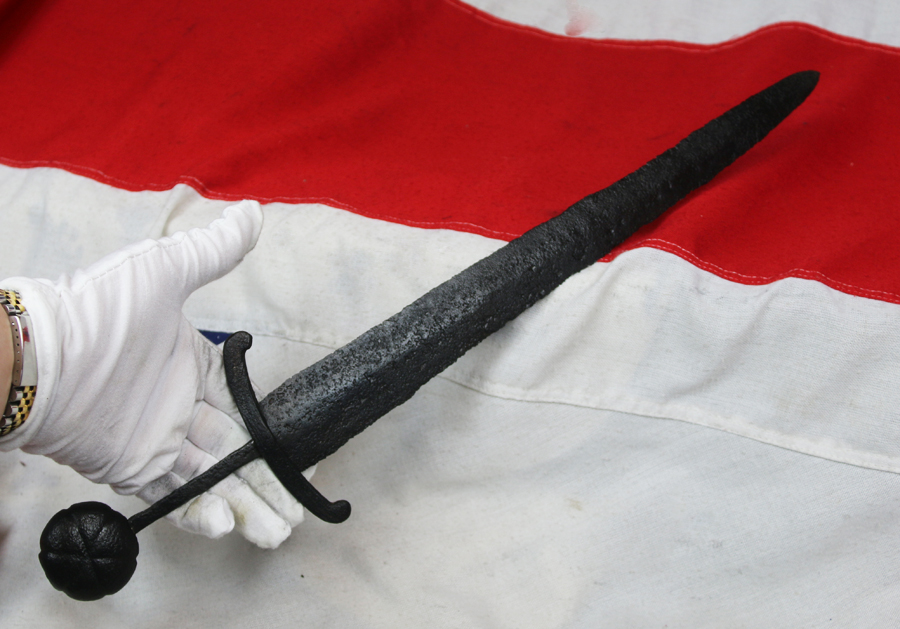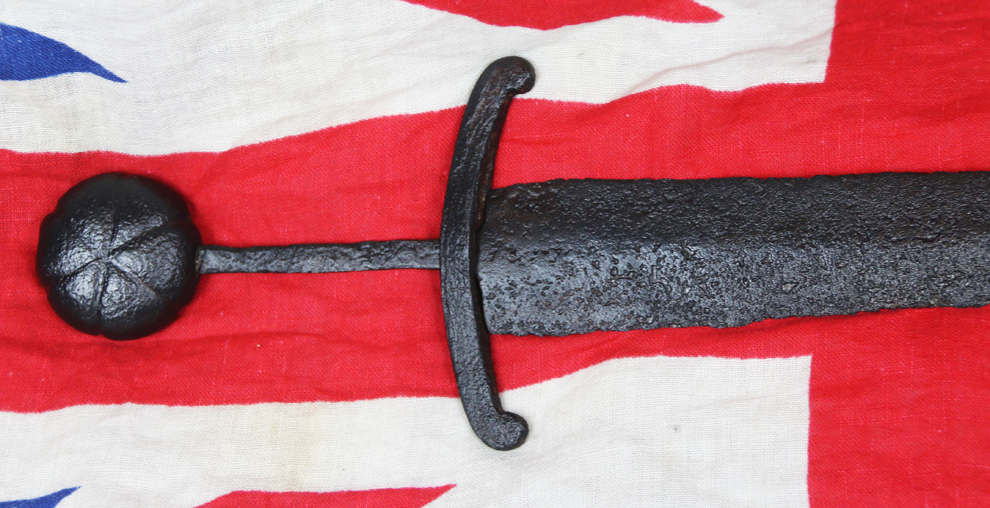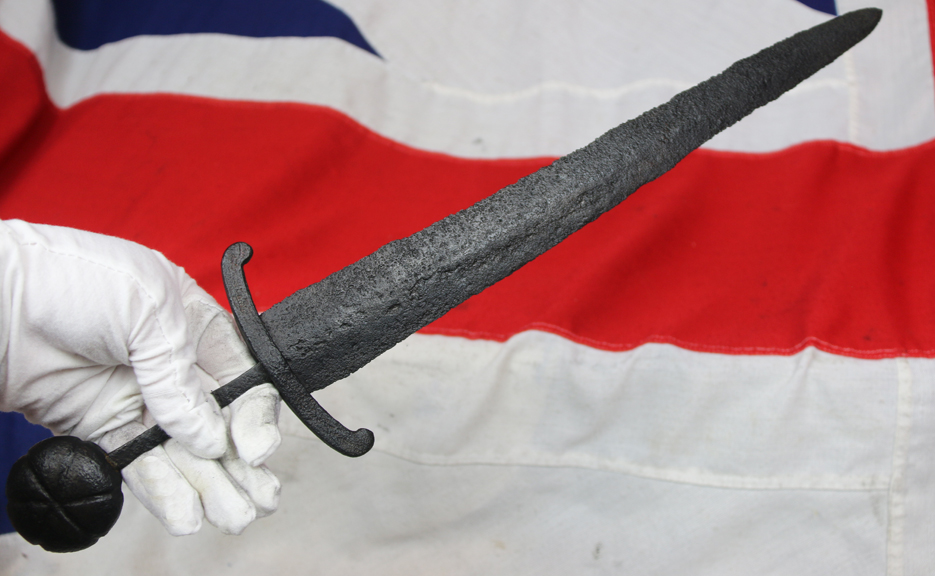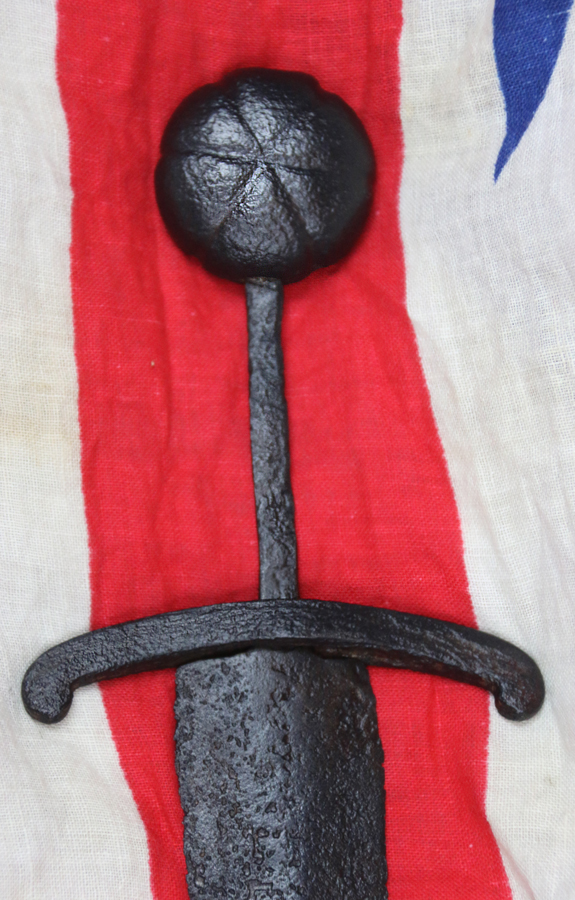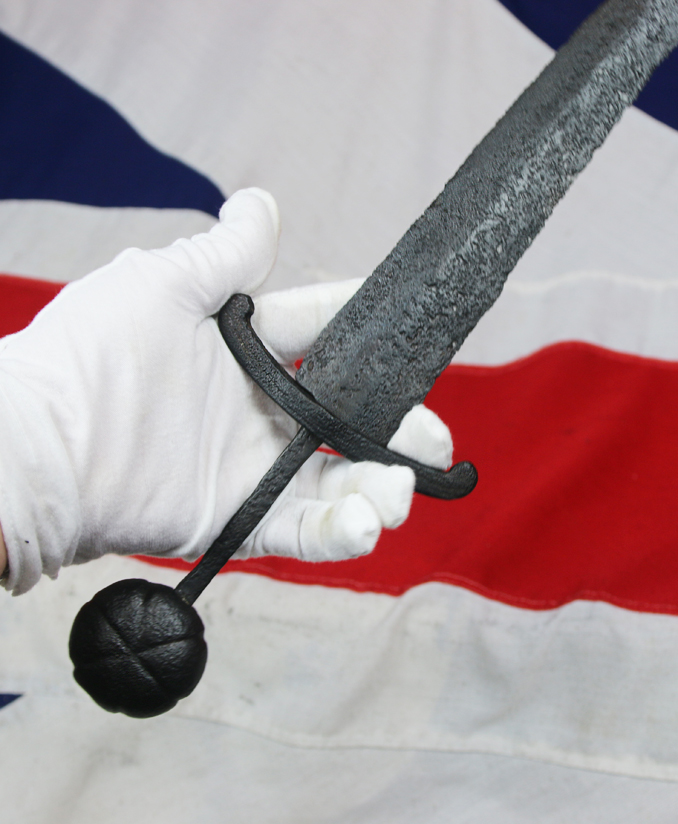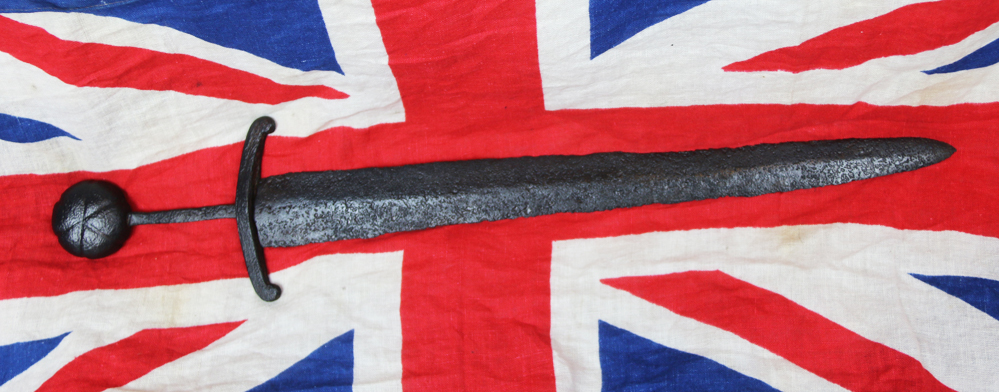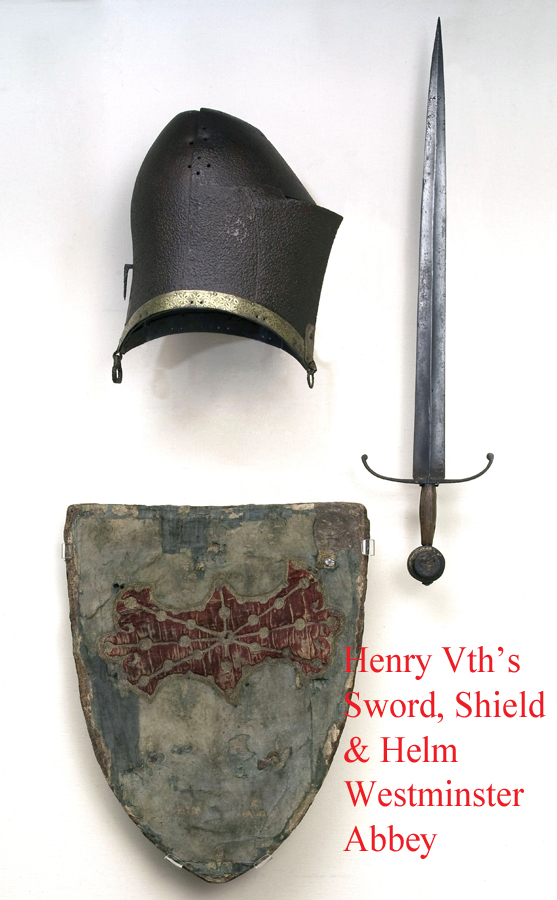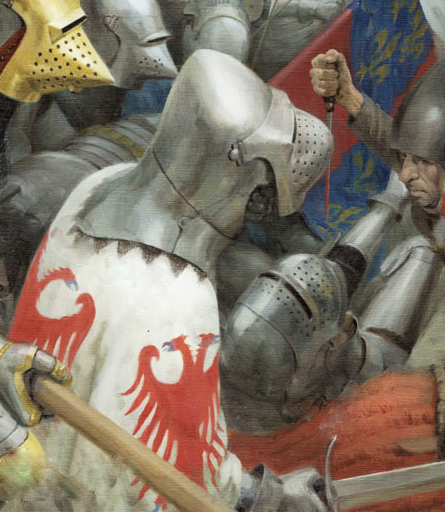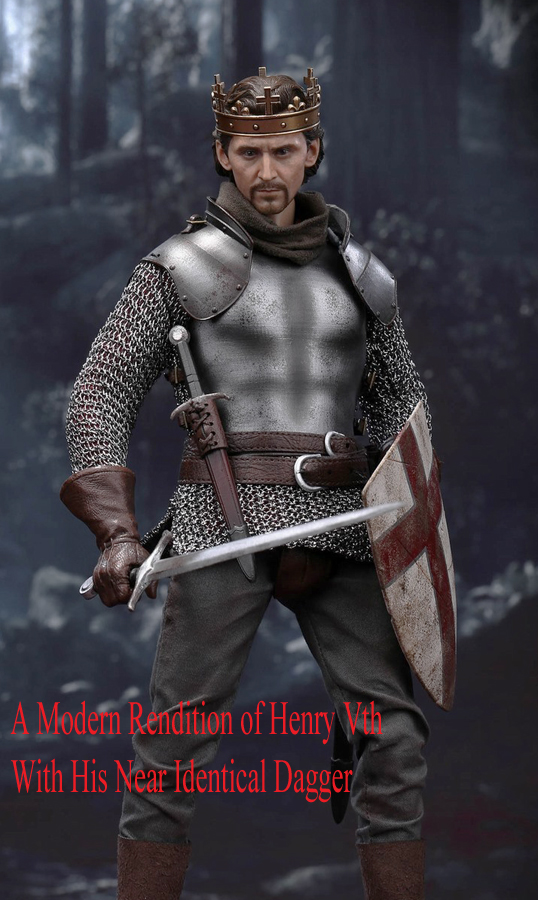A Fabulous, Original, Museum Piece, A Medieval Knight's 13th to 15th Century Long Dagger From the Time of the Plantagenet & Lancastrian Kings, From Henry IIIrd, Edwards I/II/III, Richard IInd to King Henry IVth, & King Henry Vth's Battle of Agincourt
Worthy of a world class collection of fine and early arms and armour, or a single statement piece as a compliment to any form of home decor from traditional to ultra contemporary. A piece that would be the centre of conversation and attraction in any location. A most rarely seen, original, complete, & intact, long dagger or short sword of the medieval period, used from the reigns of King Henry IIIrd to King Henry Vth, from the era of the Crusades and the Templar Knights, right through to the Anglo French Battles, the Victories of England against France, at the Battle of Crecy, in 1346, by King Edward IInd and His son the Black Prince, and later at the Battle of Poitiers, in 1356, the victory of King Edward IInd's son, the Black Prince, and King Henry Vth's victory at Agincourt, in 1415.
Daggers surviving from this ancient era are most rare, substantially more rare in fact than the swords themselves. Items such as this were oft acquired in the 18th century by British noblemen touring Northern France and Italy on their Grand Tour. Originally placed on display in the family 'cabinet of curiosities', within his country house upon his return home. A popular pastime in the 18th and 19th century, comprised of English ladies and gentlemen traveling for many months, or even years, througout classical Europe, acquiring antiquities and antiques for their private collections. This dagger's history travels from the English Plantagenet Kings Henry IIIrd, Edward 1st, Edward IInd, Edward IIIrd, & Richard IInd, to the Lancastrian Kings Henry IVth & Henry Vth including use at The Battle of Agincourt, where King Henry carried a near identical dagger and his longer version matched sword that are part of his achievements, hanging above his tomb at Westminster Abbey.
A very fine and very rare museum grade medieval knight's long dagger, with large segmented circular pommel, used for a period of around three centuries from the 13th to 15th century.
An iron double edged dagger with lentoid section tapering blade, curved quillon crossguard and scrolled ends, with narrow tang and with an impressive large segmented wheel pommel.
The Battle of Agincourt was a major English victory in the Hundred Years' War. The battle took place on 25 October 1415 (Saint Crispin's Day) in the County of Saint-Pol, Artois, some 40 km south of Calais. Along with the battles of Crecy (1346) and Poitiers (1356), it was one of the most important English triumphs in the conflict. England's victory at Agincourt against a numerically superior French army crippled France, and started a new period in the war during which the English began enjoying great military successes.
After several decades of relative peace, the English had renewed their war effort in 1415 amid the failure of negotiations with the French. In the ensuing campaign, many soldiers perished due to disease and the English numbers dwindled, but as they tried to withdraw to English-held Calais they found their path blocked by a considerably larger French army. Despite the disadvantage, the following battle ended in an overwhelming tactical victory for the English.
King Henry V of England led his troops into battle and participated in hand-to-hand fighting. The French king of the time, Charles VI, did not command the French army himself, as he suffered from severe psychotic illnesses with moderate mental incapacitation. Instead, the French were commanded by Constable Charles d'Albret and various prominent French noblemen of the Armagnac party.
This battle is notable for the use of the English longbow in very large numbers, with the English and Welsh archers forming up to 80 percent of Henry's army. The decimation of the French cavalry at their hands is regarded as an indicator of the decline of cavalry and the beginning of the dominance of ranged weapons on the battlefield.
Agincourt is one of England's most celebrated victories. The battle is the centre-piece of the play Henry V by William Shakespeare. Juliet Barker in her book Agincourt: The King, the Campaign, the Battle ( published in 2005) argues the English and Welsh were outnumbered "at least four to one and possibly as much as six to one". She suggests figures of about 6,000 for the English and 36,000 for the French, based on the Gesta Henrici's figures of 5,000 archers and 900 men-at-arms for the English, and Jean de Wavrin's statement "that the French were six times more numerous than the English". The 2009 Encyclopaedia Britannica uses the figures of about 6,000 for the English and 20,000 to 30,000 for the French. Overall 20.5 inches long in very sound and nice condition for age. There are very few such surviving long daggers from this era, and just a few are part of the Royal Collection. As with almost all surviving daggers and swords of this age, none have their wooden grips remaining, and as such the surviving crossguards are somewhat mobile.
A fine example piece, from the ancient knightly age, from almost a thousand years past. Although this dagger is now in an obvious ancient, and historical, russetted condition, every item made of iron from this era, such as the rarest of swords and daggers, even in the Royal Collection, are in this very same state of preservation.
This piece will come with a complimentary display stand, but could also look spectacular suitably framed. We are delighted to offer such a service if required.
Code: 23016
9750.00 GBP

